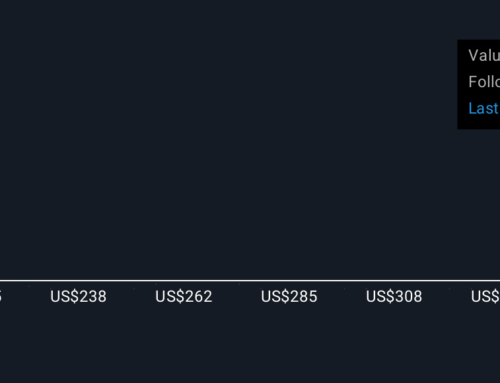Nutrition as Economic Policy: Investing in Diets is Investing in Development
October 4, 2025
Image Source: Getty Images
Introduction – The Scale of the Problem
India’s growth story has a hidden leak/caveat in its foundations: poor nutrition. Estimates suggest that malnutrition costs India between 0.8 and 4 percent of its Gross Domestic Product (GDP) annually, contingent on the study and year of measurement. This translates to tens of billions of dollars in lost productivity, healthcare expenditure, and premature mortality every year. To put this in perspective, the estimated US$10 billion lost annually to malnutrition is equivalent to nearly the annual budget of India’s Ministry of Health and Family Welfare. Despite a GDP growth of 6.5 percent in 2024–25, India continues to face stubbornly high child malnutrition, highlighting the contradiction between rapid economic expansion and weak nutrition outcomes. This suggests that the fiscal burden of malnutrition remains substantial and requires an updated analysis.
Nutrition and Productivity
Nutrition is often overlooked as a key component of development and economic policy. It is considered a healthcare issue rather than an economic one. However, in reality, it is very much an economic concern. Moreover, it has also been proven that people with nutritional deficiencies are less productive at work.
At the heart of this loss is productivity. Workers suffering from poor nutrition are less productive, more absent from the job, and vulnerable to illness. Research consistently shows that nutrition deficits translate into lower wages and diminished lifetime earnings. This indicates that India’s vast demographic dividend is, in practice, a productivity trap. The productivity trap refers to a vicious cycle where malnutrition diminishes learning and work capacity, resulting in reduced productivity and slower economic growth. This, in turn, limits resources for improving nutrition, locking both individuals and the economy into stagnation.
Nutrition should not be viewed only as a welfare cost but also as an economic investment in human capital.
The framing matters.Nutrition should not be viewed only as a welfare cost but also as an economic investment in human capital. Each rupee spent on nutrition translates into a measurable return, much like the investments poured into physical infrastructure. If highways fuel commerce, good nutrition fuels the workforce that drives said commerce.
The relationship between nutrition and economic performance is not theoretical; it operates through and impacts the workforce, classrooms, and hospitals. India’s population growth—as indexed to the age group of 15-59—contributed to an increase in the working-age population from 1996 to 2016. However, the upside of this demographic dividend continues to be eroded by poor nutrition.
For instance, a staggering 57 percent of women and 67 percent of children in India are classified as anaemic in the most recent National Family Health Survey (NFHS-5). This is not just a health statistic; it translates to diminished energy for daily work, affects maternal health, and limits the economic aspirations of millions of families. Anaemia also reduces physical work capacity and cognitive performance, reducing productivity not only in the present but also in the future. In India, malnutrition remains the leading risk factor for the disease burden, particularly among children and young women.
Figure 1: Regional Variations in Child Malnutrition Indicators (NFHS-5 Data)
Source: National Family and Health Survey(NFHS) 5 Data
Policy Gaps
Despite being the world’s largest producer of milk, pulses, and the second-largest producer of rice and wheat, India ranks very poorly on nutrition-related metrics.The gap between agricultural abundance and nutritional well-being indicates structural deficiencies in policy design. Food policy continues to prioritise calorie sufficiency over nutrient density, resulting in diets that are often void of iron, protein, and micronutrients.
The gap between agricultural abundance and nutritional well-being indicates structural deficiencies in policy design.
Workforce nutrition is another blind spot. Corporate wellness programmes generally focus on fitness or mental health, and rarely on nutrition. Dietary practices among industrial and gig-economy workers (both of which are fast-growing) are often devoid of organised, nutrition-oriented support, which stunts productivity. The International Labour Organization (ILO) has warned that neglecting workforce nutrition can reduce efficiency and earnings across developing economies.
The Pradhan Mantri (PM) POSHAN (mid-day-meal) programme serves millions, yet they are seldom structured to optimise for cognitive outcomes or link nutrition to future employability. Similarly, Smart Cities, as an urban planning intervention, rarely consider food security as part of their design, even though the problem of urban malnutrition continues to increase.
These gaps demonstrate how nutrition remains sequestered as welfare and is not considered as an economic infrastructure which crosses sectors.
The Way Forward
Maximising the economic returns from nutrition requires breaking out of policy silos. Outcomes in nutrition are achieved not only in clinics but also on farms, in schools, and in workplaces. A collaborative framework is therefore essential.
The agriculture–health–finance triangle is a starting point. Subsidies for crops are currently biased toward calorie-dense staples, but agricultural subsidies can be switched to nutrient-dense crops; the reform is less about farm incentives aligning with public health interests. Lower health insurance premiums could also provide income incentives to reduce food insecurity.
Figure 2: The Malnutrition-Poverty Trap: How Poor Nutrition Perpetuates Economic Stagnation
Source:World Bank (2006), Repositioning Nutrition as Central to Development; UNICEF (1998), The State of the World’s Children: Malnutrition
Similarly, the education–nutrition–employment pipeline must be strengthened. School meal programme standards must not only develop calorically-dense children, but also optimise outcomes for cognitive development, while skills development is integrated with food and nutrition education initiatives. Better nourished students become a better trained, more employed and higher earning workforce, which leads to more prosperous communities and a more flexible economy.
India has proof that nutrition investments can deliver measurable returns. The PM POSHAN (mid-day meal) scheme has a combined central and state investment of INR8.57 billion over five years and is one of the largest school feeding programmes in the world. Studies, including a 2024 World Food Programme (WFP) evaluation of PM POSHAN, highlight that mid-day meals improve attendance, enhance learning outcomes, and increase lifetime earnings potential.
Likewise, the POSHAN Abhiyaan was launched in 2018 and has yielded proof-of-concept on how to enable multi-ministry coordination and leverage technology to accelerate nutrition progress. As supported by the World Bank, the programmed digital platforms, such as the Poshan Tracker, improve monitoring of beneficiaries and more targeted interventions. Evidence from independent evaluations in a NITI Aayog report supports evidence that it has some contribution in reducing stunting, undernutrition, and anaemia. However, these successes must be viewed critically, as the latest NFHS-5 data reveals worrying trends on key indicators, such as anaemia, underscoring the scale of the challenge that remains.
India has experience that nutrition is not charity; nutrition serves as a good investment in growth with a return-on-investment (ROI) and scalable impact.
The economics is simple; programmes that are successful in reducing malnutrition, lower healthcare costs, enhance school performance, and can enhance productivity in the workforce. According to the Global Nutrition Report 2024,every US$1 invested in nutrition yields US$23 in economic returns. The World Bank estimates that school meal programmes alone generate US$4–$11 in returns for each dollar spent. India has experience that nutrition is not charity; nutrition serves as a good investment in growth with a return-on-investment (ROI) and scalable impact.
The lesson from POSHAN Abhiyaan is clear: coordinated, multi-ministry action multiplies economic returns and creates measurable growth dividends.
If India is serious about becoming a developed economy by 2047, nutrition must take centre stage in economic policy strategies starting today. The evidence is compelling: malnutrition quietly undermines productivity, raises healthcare costs, and jeopardises human capital. Three strategic shifts are essential. First, policy integration: nutrition impact assessments should be mandatory for all economic policies, and an inter-ministerial task force linking food, health, and finance must be established. Secondly, scaling investment–nutrition expenditure should increase according to the measured yield. Nonetheless, new financing mechanisms need to be developed, including nutrition bonds and corporate integration with Environmental, Social, and Governance (ESG) frameworks. Third, measurement reform—platforms such as Poshan Tracker must evolve to capture not only health but also productivity and income gains.
Nutrition is not charity, but one of India’s most cost-effective growth strategies. To unlock the demographic dividend, India must invest in the fuel that powers its workforce.
Hamza Ahmad is a Research Intern at the Observer Research Foundation
The views expressed above belong to the author(s). ORF research and analyses now available on Telegram! Click here to access our curated content — blogs, longforms and interviews.
Search
RECENT PRESS RELEASES
Related Post






